Growing up in Turkey, çilbir aka Turkish poached eggs, was a breakfast staple. As you have seen in so many of our Turkish cuisine recipes, our culture is big on using strained yogurt (commonly referred to as Greek yogurt) as a complement to our savory dishes. Thus, for me as a Turkish child, Greek yogurt and eggs for breakfast were frequent delights—and ones I still crave regularly as an adult in the US.

What Are Turkish Eggs (Cilbir)?
Cilbir eggs (pronounced “chull-burr”) are essentially eggs and yogurt for breakfast. To make this Turkish eggs recipe, you prepare a garlic yogurt sauce and a chili butter sauce for your plate’s base, then you poach your eggs to place on top, and use crusty bread as your serving spoon to swirl the velvety combo together.
The tang of the yogurt and the zing of the chili sauce give the Turkish-style eggs a surprising pop that will leave you licking the plate. The best part is that while it looks like something you’d be served at a top-tier brunch restaurant, it comes together quickly and without fuss in your own kitchen.
Ingredients and Substitutions
A short list of ingredients and four simple components make this Turkish breakfast recipe something that is 100% achievable on both weekday and weekend mornings in under 25 minutes. Here’s what you’ll need to prepare this Turkish yogurt and eggs recipe:
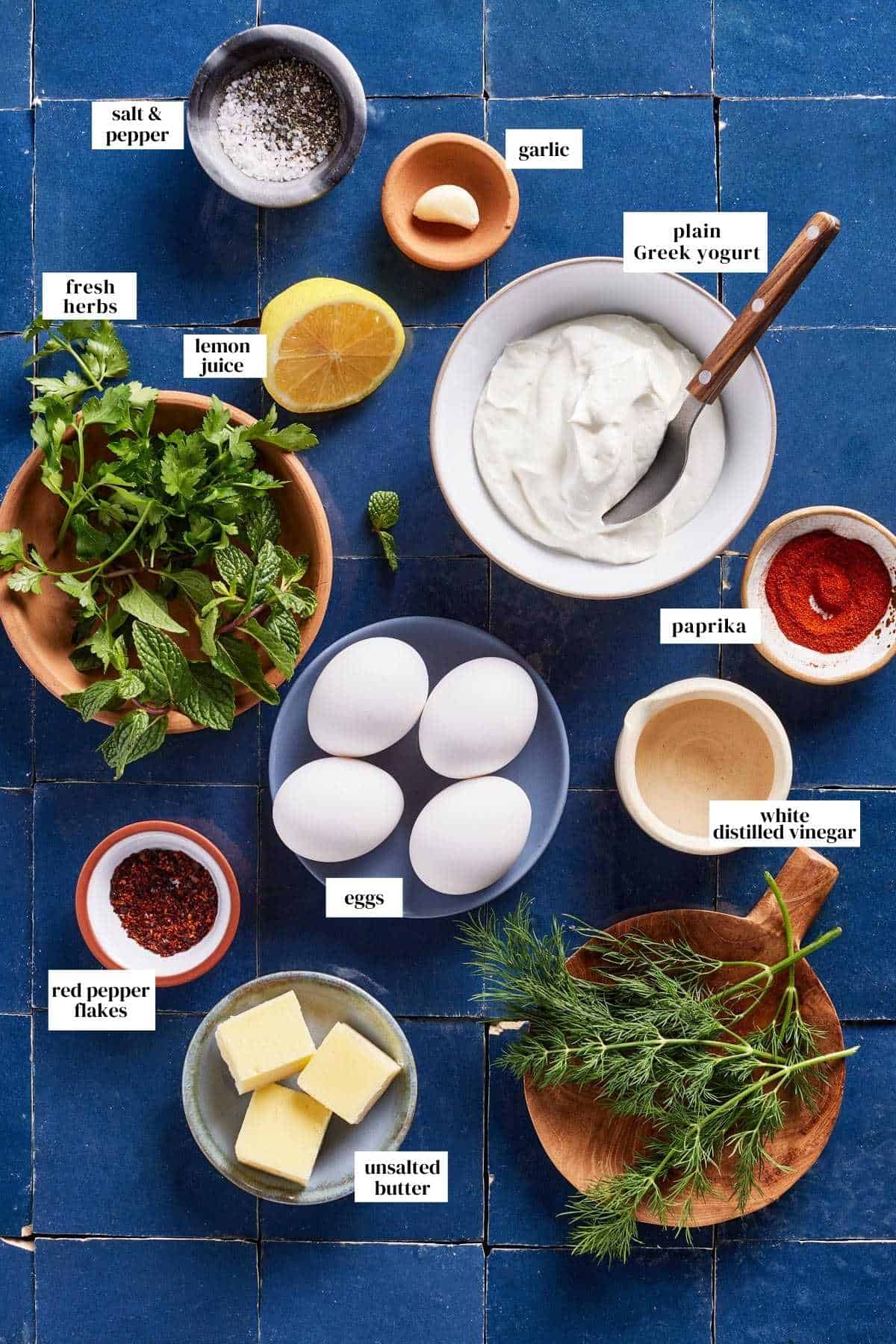
- For the Garlic Yogurt Sauce:
- Plain Greek yogurt: Since this is a savory dish, it is important to select plain, unsweetened yogurt. Strained, as known as Greek yogurt, works best, but if all you have is regular yogurt, you can use that as well. If you have the time, you can place it over a cheesecloth-lined strainer and let it drip for a few hours to have a similar, thick consistency to Greek yogurt.
- Fresh garlic clove: We only use 1 clove in our Turkish çılbır recipe, but you’re welcome to add more if you want a more intense garlic flavor.
- Lemon juice: Freshly squeezed from 1 lemon works best—just be sure to avoid dropping in any seeds.
- Kosher salt and black pepper
- For the Poached Eggs:
- Distilled white vinegar: We use a small amount in this Turkish egg dish as a tool to help our eggs coagulate more quickly during the poaching process. Not to worry—you won’t notice much of a vinegar flavor in the final dish. While distilled white vinegar is the traditional ingredient here, you’re also welcome to substitute in apple cider vinegar or white wine vinegar for the same effect.
- Eggs: We used large eggs, but extra large eggs would also work just fine.
- For the Spicy Butter Sauce:
- Unsalted butter: If you’d prefer to use salted butter instead, please be sure to adjust the additional salt to taste. We think this yogurt eggs recipe is best made with butter, but if you’d rather use oil, you may swap in olive oil or a combination of the two.
- Turkish red pepper flakes: We recommend that you use Urfa chili pepper or Aleppo pepper, which is also known as “pul biber.” If you can’t get your hands on it, you can use any chili flakes you have in your spice drawer. Also, if you are serving Turkish eggs and yogurt to children or those who cannot handle spicy foods, you can use paprika only.
- Sweet paprika: We prefer sweet paprika but smoked paprika can also be used.
- Kosher salt
- For Serving:
- Fresh herbs: Depending on your palate, you can finish this dish off with a sprinkling of either fresh dill, parsley, or mint. Sumac is also an excellent Turkish seasoning to garnish this dish.
- Crusty bread: Your bread is used as a vehicle for scooping up the ultra-creamy Turkish eggs with yogurt. It is usually served with crusty bread such as our No Knead Olive Bread, No Knead Artisan Bread, or if you want to do it as we do it in Turkiye, you can serve it with Simit or Pita Bread to scoop up the smooth, savory fusion of eggs and yogurt. Once you try it, you will know why it is one of the most popular Turkish egg recipes!
How to Make Turkish Eggs?
Yogurt and eggs for breakfast come together in a few simple steps. If you follow these step by step instructions, you’ll end up with a delectable way to start your day, Mediterranean-style.

- Yogurt with eggs starts with the yogurt sauce! In this first step, you’ll whisk together the yogurt, fresh garlic, lemon juice, salt, and pepper in a bowl. Then, simply cover it and set it aside so it can come to room temperature while you prepare your eggs.
- Poaching the eggs is next, but don’t be intimidated—it’s easier than you think. Fill a medium saucepan with water that’s at least 4 inches deep and bring it to a boil over medium-high heat. Once it comes to a boil, turn the heat down to low and let it come to a simmer. This is when you stir in the vinegar, which is crucial for perfectly poached eggs.
- Draining the raw eggs first is important. While you are waiting for the water to come to a boil, place a fine-mesh strainer over a small bowl and crack an egg into it. Be very gentle at this step—you want to keep your yolk fully intact. Allow the excess watery egg whites to drop through the strainer, then transfer it into a ramekin. Repeat the same process for the rest of the eggs.
- Place a sheet of paper towel on a large plate and set it aside. (You’re going to use this to dry off your cooked eggs!)
- When you’re ready to poach your eggs, we recommend that you cook no more than two at a time, otherwise it can get overwhelming. First, stir the simmering water to create a vortex in the middle, carefully drop the egg in the middle, and then cook for 3 to 3 ½ minutes until the whites are firm and the yolk is set but still soft and runny.
- Dry the cooked eggs as they come out of the water. Carefully remove the egg using a slotted spoon (draining the excess water) and then transfer it to the paper-towel-lined plate. Repeat the same process with the rest of the eggs, cooking each set two at a time.
- Immediately before serving, melt the butter in a small pan or skillet. This step comes together quickly, so we find it easiest to work with butter cut into smaller pieces. Next, add the Urfa chili pepper (or any red pepper flakes) and salt to your melted butter. Allow the combo to cook for 15-20 seconds, or until the butter starts to foam and sizzle. Do not let it brown!
- Plate your eggs with yogurt. Using the back of a large spoon, spread half of the yogurt sauce on a plate. Then, add two poached eggs on top of the yogurt sauce. Finally, drizzle it all with the sizzling chili butter sauce.
- Garnish your dish. Using the fresh herbs of your choice—parsley, dill, or mint—sprinkle them over the top along with a pinch of salt and pepper, to taste. Here is where you could also use sumac, if you’re interested. Repeat the same process for the second serving in its own dish. Serve immediately while still warm.
How To Make Ahead and Store?
The truth is, this is a dish that is meant to be made and enjoyed at the moment. Turkish eggs breakfast is simple though, so there’s not too much prep that needs to be done ahead of time—it’s already a streamlined recipe.
- To Make Ahead: If you’d like, the component that you can make in advance is the garlic yogurt sauce. Simply mix it together and place it in the fridge. We recommend you allow it to come to room temperature before serving.
- To Store: Unfortunately, there’s really no good way to store poached eggs and yogurt that’s already been warmed, so eat up!

Expert Tips
If you’re looking for Turkish egg breakfast perfection, it’s definitely within reach if you take note of this insider advice:
- Start with room-temperature eggs eggs. It is best to take your eggs out of the fridge 15-20 minutes before you are ready to poach them, as cold eggs straight from the fridge can lower the water temperature too much, which can lead to uneven cooking and a looser white.
- Get yourself some fresh eggs for the best results. In his article on poaching eggs, my favorite food scientist/teacher, Kenji Lopez-Alt, says, “Fresh eggs have tighter whites and yolks that help them retain their shape better as they cook.” So, using fresh eggs, you will end up with perfectly poached eggs without those whispy white floaters.
- Do not skip straining your raw eggs. Straining the egg before poaching helps remove the thin, watery part of the egg white, which is what tends to create those wispy strands in the water. By removing this excess liquid, you’re left with a firmer white that wraps neatly around the yolk, resulting in a more compact, poached egg.
- Only poach two eggs at a time. The poaching process moves more quickly than you think, so sticking to two eggs at a time prevents you from getting overwhelmed and damaging the eggs due to rushing and overcrowding in the pan.
- Bring your yogurt to room temperature before plating. You do not want your hot eggs and hot chili butter sauce interacting with cold yogurt. That is why we recommend making the garlic yogurt sauce first so that it can come to room temperature while you are poaching the eggs.
- Watch your butter—it burns easily. Your chili butter sauce is the final step because it is practically done instantaneously. Do not step away or leave it in the pan too long, as it will brown and burn, thus becoming unappetizing.
- Check your eggs for doneness. While this is more of a personal preference, runny yolks are one of the characteristics of this egg yogurt recipe. You will want to watch your eggs and remove them when they have reached the level of runniness you desire in your yolks. While it’s not traditional, soft fried eggs are acceptable if you don’t enjoy poached eggs.
- Presentation matters. This is an Instagram-worthy recipe. To achieve a finished dish like the one in our photos, be sure to plate as instructed by swirling the yogurt on the plate, then placing the eggs on top, then drizzling your chili butter sauce. The fresh herb topping gives a green flash of color that you won’t want to skip.
- Serve immediately. This is not the type of dish that you want to leave sitting around. Poached eggs are meant to be served right away, particularly here since you’ve just topped them with hot chili butter sauce.
FAQs
Turkish eggs originated during the Ottoman Empire, first appearing as a recipe in a book in 1876. While there have been a few variations on the dish over the centuries (cinnamon, onions, and tomato have made appearances), this Turkish eggs with Greek yogurt recipe has mostly stood the test of time as it is outlined here.
The cilbir pronunciation isn’t as tricky as it looks. The ç character is pronounced like the English letter combination of “ch”. Then, the full word sounds like, chull-burr.
If you make your own Turkish Eggs Recipe following our recipe, I would greatly appreciate it if you could take a minute to rate it and leave a comment below. It is a great way to support this website and help those planning to make it. Also, if you took pictures, I’d love to see them. Share your creations on Instagram using #foolproofeats so I can share them with the Foolproof Living community.
More Turkish Recipes You Might Like
Pasta
Turkish Pasta
Non Alcoholic Drinks
How to Make Turkish Coffee
Turkish Cuisine
Piyaz – Turkish White Bean Salad

Turkish Eggs Recipe (Cilbir)
Ingredients
For the Garlic Yogurt Sauce:
- 1 cup unsweetened plain Greek yogurt, room temperature
- 1 clove fresh garlic, minced
- 1 teaspoon lemon juice, freshly squeezed
- ½ teaspoon kosher salt, or more to taste
- ¼ teaspoon ground black pepper
For the Poached Eggs:
- 1 tablespoon white vinegar
- 4 large eggs
For the Chili Butter Sauce:
- 3 tablespoons unsalted butter*, cut into pieces
- 1 teaspoon Urfa or Aleppo pepper, any red pepper flakes you have on hand
- ½ teaspoon sweet paprika
- ¼ teaspoon kosher salt
For Serving:
- 1 tablespoon of fresh herbs, such as parsley, dill, and/or mint
- Sliced bread or toast
Instructions
- To make the yogurt sauce, whisk together the yogurt, garlic, lemon juice, salt, and pepper in a bowl, cover it, and set it aside. I intentionally do this first so that it can come to room temperature while I poach the eggs.
- To poach the eggs, fill a medium saucepan with water (it should be at least 4 inches deep) and bring it to a boil over medium-high heat. Once it comes to a boil, turn the heat down to low and let it come to a simmer. Stir in the vinegar.
- While you are waiting for the water to come to a boil, place a fine mesh strainer over a small bowl and crack an egg while being super gentle to make sure not to disturb the yolk. Let the excess loose (watery) egg whites drop through and then transfer it into a ramekin. Repeat the same process for the rest of the eggs.
- Place a sheet of paper towel on a large plate and set it aside.
- When ready to poach the eggs, stir the simmering water to create a vortex in the middle, carefully drop the egg in the middle, and cook for 3 to 3 ½ minutes until the whites are firm and the yolk is set but still soft and runny.
- Carefully remove the egg using a slotted spoon and then transfer it to the paper-towel lined plate. Repeat the same process with the rest of the eggs*.
- Right before serving, melt the butter in a small skillet. Add the Urfa chili pepper (or any red pepper flakes) and salt. Let it cook, stirring gently with a wooden spoon, for 15-20 seconds until the butter starts to foam and sizzle and the color turns to a hazelnutty brown.
- To assemble: Using the back of a large spoon, spread half of the yogurt sauce on a plate. Add two poached eggs on top and drizzle them with the sizzling chili butter sauce.
- Garnish with fresh parsley or chopped dill; sprinkle it with a pinch of salt and pepper to taste. Repeat the same process for the second serving. Serve immediately while still warm.
Video
Notes
- Yields: This recipe serves 2 people with each portion serving two eggs. The nutritional values below do not include the optional serving of bread/toast.
- Butter: You can use salted butter, but if you do, omit the additional salt.
- Cooking eggs: We recommend poaching no more than two eggs at a time for the best results.
- Eggs: While this Turkish egg recipe is traditionally made with poached eggs, you can serve it with fried eggs or soft-boiled eggs as well.
- Make Ahead & Storage: You can make the garlic yogurt sauce a day in advance and store in an airtight container in the fridge. While technically you can store the leftovers in an airtight container, we highly recommend consuming this dish as soon as possible while it is still warm and fresh.
Nutrition
Nutrition information is automatically calculated, so should only be used as an approximation.




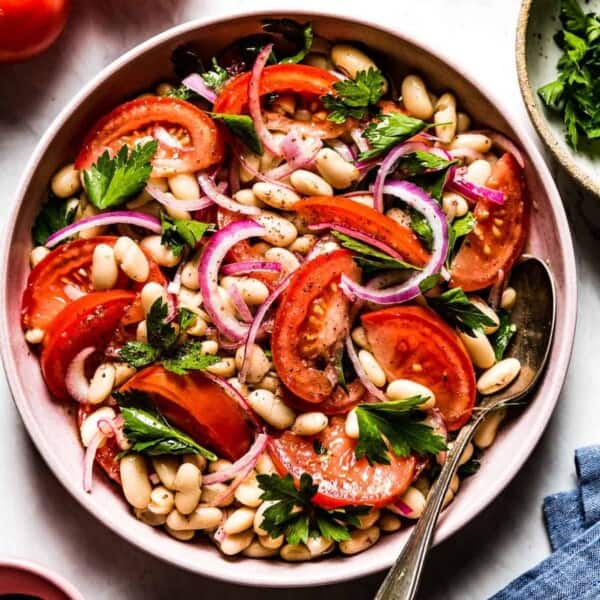
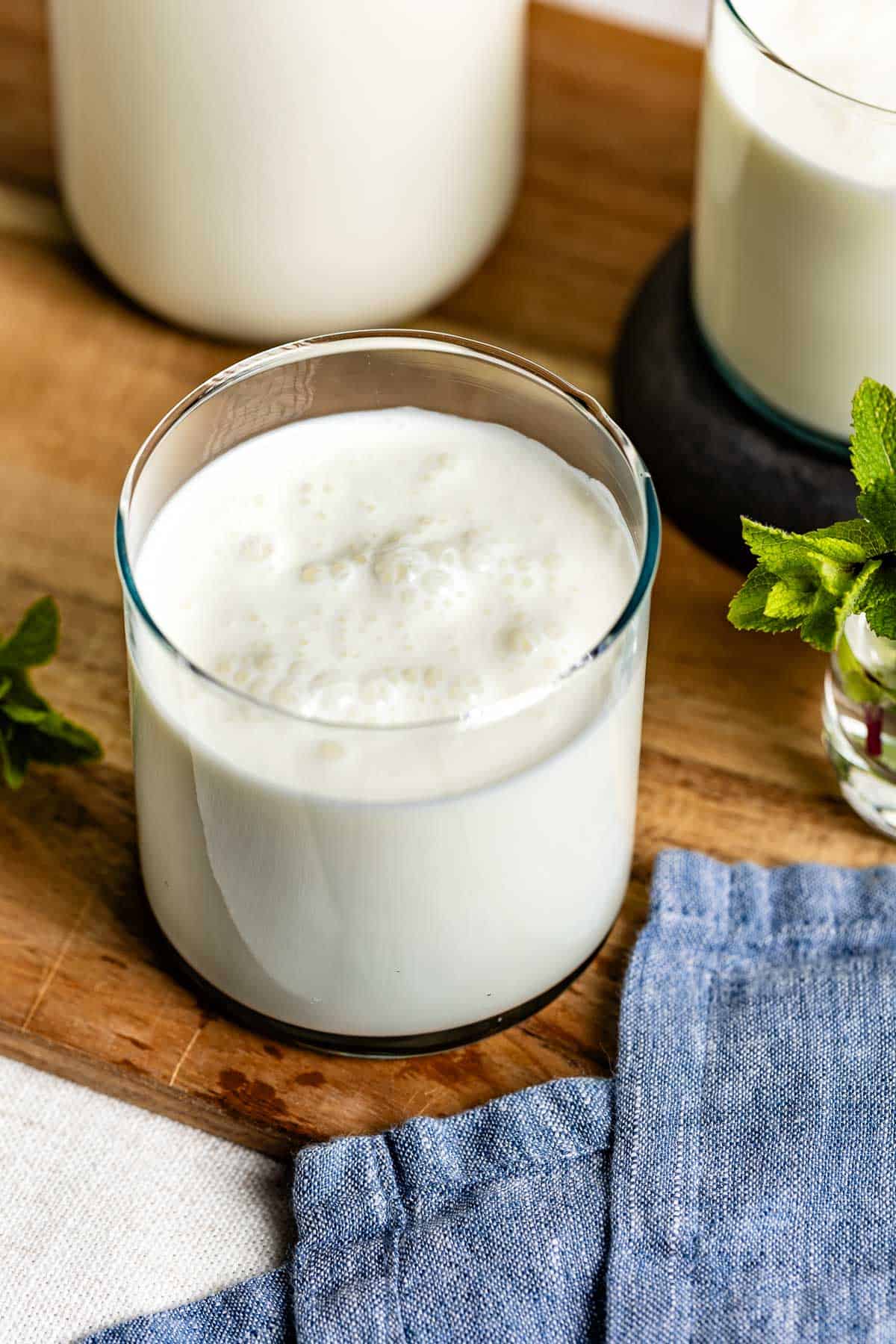
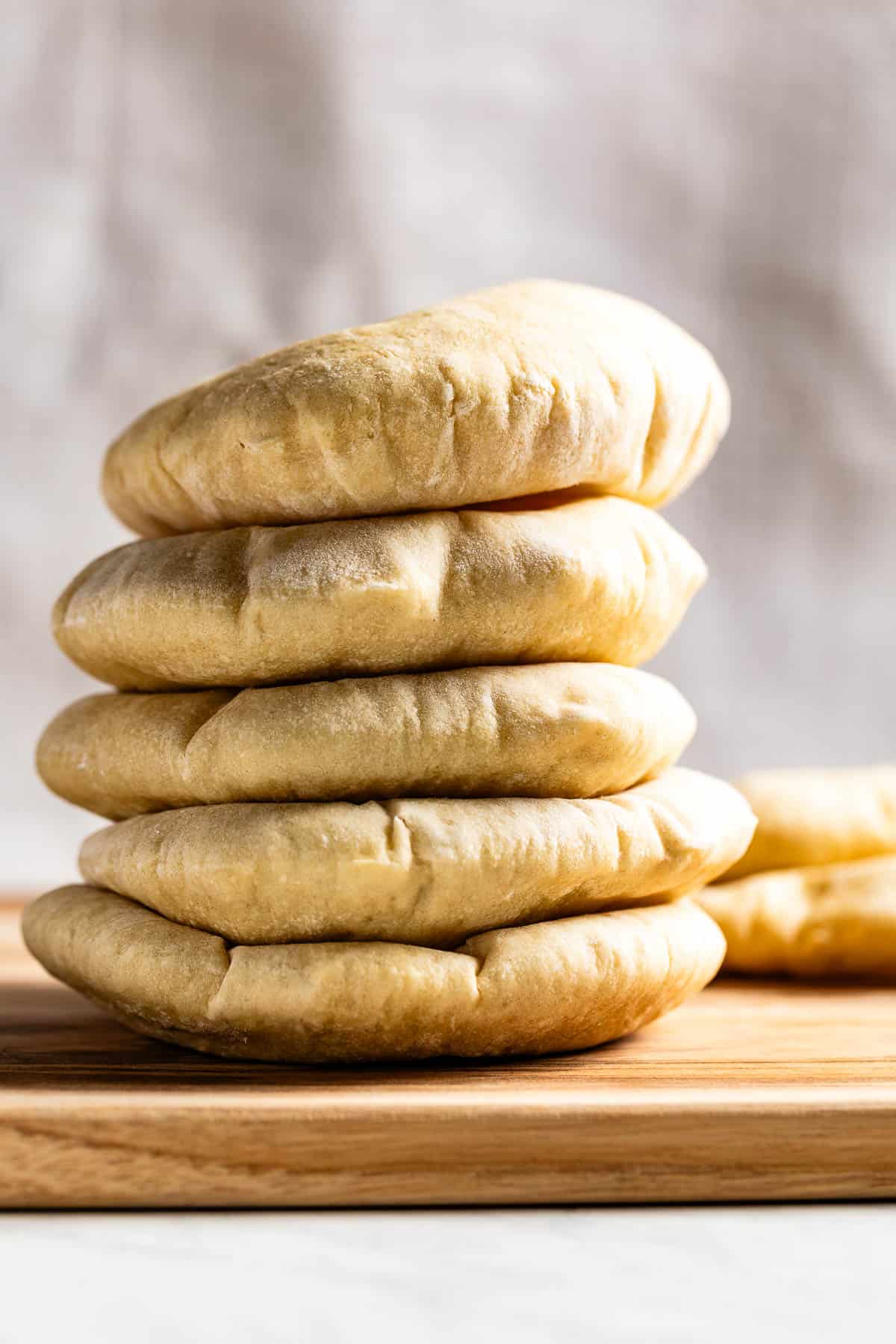
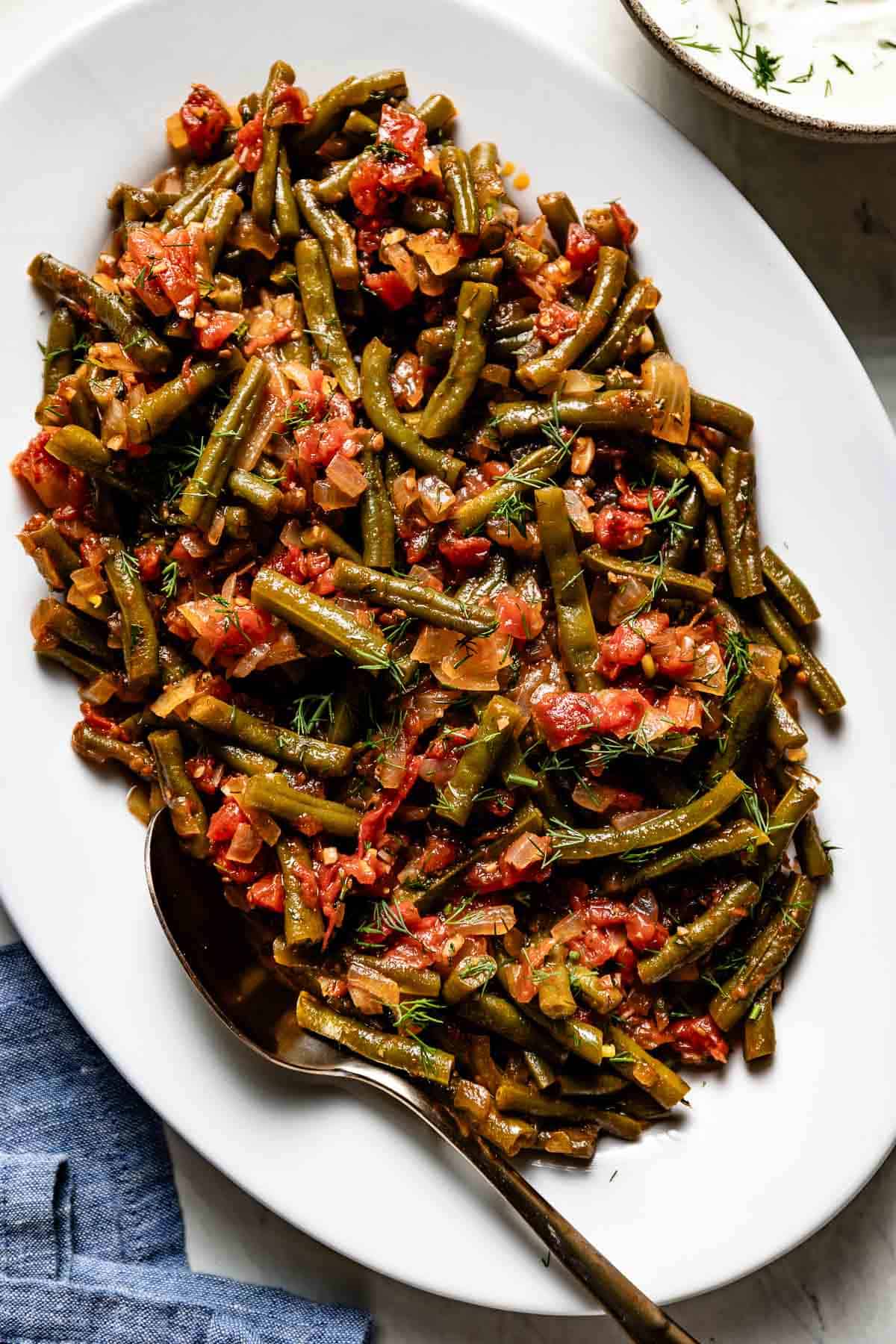










I loved this recipe so much! The taste was perfect and the eggs came out so well eventhough it was my first time poaching eggs !
Your recipes never disappoint 🙂
YAY! This makes me SO happy Yoshita. Thanks for coming by and taking the time to leave a review.